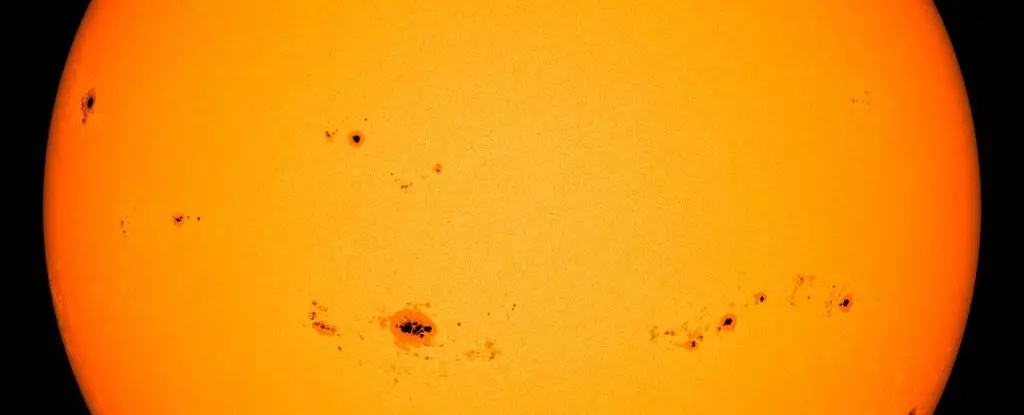Recent announcements from NASA, the National Oceanic and Atmospheric Administration (NOAA), and the Solar Cycle Prediction Panel have confirmed an exciting phase in our solar system: we are now entering solar maximum. This period signals the peak of the Sun’s 11-year activity cycle, characterized by increased sunspots, prolific solar flares, and dramatic coronal mass ejections. As we explore the ongoing dynamics of our nearest star, it’s essential to comprehend what this means not only for our planet but also for our broader understanding of solar phenomena.
During solar maximum, the Sun’s magnetic activity approaches its zenith, leading to frequent solar events that can have significant consequences for life and technology on Earth. Nevertheless, while the announcement might suggest a current peak, solar phenomena can vary widely within the cycle. Meteorologist Elsayed Talaat from NOAA has aptly noted that we cannot predict the exact moment when solar activity reaches its highest point, as the dynamics are complex and subject to ongoing research.
Though the 11-year cycle is a well-established concept in solar physics, the intricacies behind it remain elusive. While we can observe the manifestations of solar activity, including sunspots and flares, the driving mechanisms inside the Sun that give rise to these cycles are still not completely understood. As solar astrophysicist Michael Wheatland from the University of Sydney articulated in 2022, the unpredictability of solar cycles poses one of the critical challenges in astrophysics.
The reliance on sunspots enables scientists to measure phases of solar activity effectively. During solar minimum, sunspots can be infrequent, leading to a calmer solar environment. Contrastingly, solar maximum is marked by a cavalcade of sunspots – akin to freckles on an otherwise smooth surface. These areas of concentrated magnetic fields often lead to tumultuous solar outbursts, including solar flares, which can result in impactful radiation bursts as well as coronal mass ejections that jettison vast quantities of solar material into space.
The behavior of the Sun during these cycles is indeed significant for Earth and our technological infrastructures. Solar flares, for example, can induce radio blackouts, disrupting communication systems. More concerning are coronial mass ejections, which release solar particles directed toward Earth. When these high-energy particles collide with the Earth’s magnetic field, they can trigger geomagnetic storms, which have the potential to wreak havoc on power grids and satellite systems.
Nevertheless, the beauty of solar activity cannot be overlooked. The interactions between solar particles and Earth’s upper atmosphere also result in the brief yet breathtaking auroras, a visual spectacle that has captivated observers historically and will continue to do so during this active period.
Despite being labeled a stronger solar cycle than previous predictions suggested, it is essential to contextualize the current intensity. While the cycle exhibiting increased activity—illustrated dramatically by the recent X9.0 flare on October 4—places it among the top contenders for strongest solar flares recorded, it is by no means unprecedented. In fact, the historical record shows that more powerful solar events have occurred in the past.
An interesting development arises in relation to the predictive abilities of scientists regarding solar phenomena. Some researchers may have anticipated a robust solar cycle more accurately than others, challenging prevailing models and assumptions. The variance in prediction accuracy points to a need for further investigation into our understanding of solar dynamics, potentially leading to breakthroughs in solar cycle prediction.
As we embark on the exciting journey through solar maximum, we must remain vigilant and open to the discoveries ahead while keeping the risks in perspective. Witnessing the wonders of solar activity—as well as understanding their implications on our technological systems—equips us to better navigate the complexities of our environment’s relationship with our dynamic Sun.
As we brace ourselves for upcoming cosmic events, let us also embrace the potential for scientific advancement that these solar phenomena prompt. As researchers delve deeper, the mysteries of the Sun may unfold further, providing insights that enrich our understanding of not only our solar system but the broader mechanisms that govern other stellar bodies in the universe.

